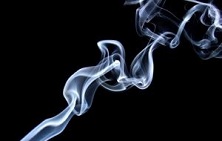 SAN DIEGO—Nonsmoking rooms in hotels operating a partial smoking ban don’t protect their occupants from tobacco smoke, reveals research published online in Tobacco Control. Non-smokers should give hotels that allow smoking in certain rooms a wide berth, say the authors, and instead choose completely smoke free hotels.
SAN DIEGO—Nonsmoking rooms in hotels operating a partial smoking ban don’t protect their occupants from tobacco smoke, reveals research published online in Tobacco Control. Non-smokers should give hotels that allow smoking in certain rooms a wide berth, say the authors, and instead choose completely smoke free hotels.
The researchers analyzed the surfaces and air quality of rooms for evidence of tobacco smoke pollution (nicotine and 3EP), known as third hand smoke, in a random sample of budget to mid-range hotels in San Diego. Ten hotels in the sample operated complete bans and 30 operated partial smoking bans, providing designated nonsmoking rooms.
Non-smokers who spent the night at any of the hotels provided urine and finger wipe samples to assess their exposure to nicotine and a cancer causing agent found specifically in tobacco smoke—known as NNK—as measured by their metabolites cotinine and NNAL. The findings showed that smoking in hotels left a legacy of tobacco pollution in both smoking and nonsmoking rooms. A partial smoking ban did not protect the occupants of nonsmoking rooms from exposure to tobacco pollution.
Compared with hotels operating total smoking bans, surface nicotine and air 3EP levels were higher in both nonsmoking and smoking rooms of hotels operating partial bans. Surface nicotine levels were more than twice as high in nonsmoking rooms of hotels operating partial bans as those of hotels operating total smoking bans (3.7 μg/m 2 compared with 1.4 μg/m 2), while air levels of 3EP were more than seven times as high. Surface and air nicotine levels in rooms where previous guests had smoked were 35 and 22 times higher than those of rooms in hotels operating a total smoking ban.
Presence of Nicotine in Nonsmoking Rooms
Air nicotine levels in smoking rooms were significantly higher than in nonsmoking rooms; and they were also 40 percent higher in nonsmoking rooms of hotels operating partial smoking bans than in those operating total bans. Similarly, hallway surfaces outside smoking rooms also showed higher nicotine levels than those outside nonsmoking rooms. Nonsmokers who stayed in hotels with partial smoking bans also had higher levels of finger nicotine and urinary cotinine than those staying in hotels operating total bans. Urinary NNAL was also significantly higher in those staying in the 10 rooms containing the highest levels of tobacco pollutants.
“Our findings demonstrate that some nonsmoking guestrooms in smoking hotels are as polluted with [third hand smoke] as are some smoking rooms,” write the authors. They go on to say: “Moreover, nonsmoking guests staying in smoking rooms may be exposed to tobacco smoke pollutants at levels found among nonsmokers exposed to second hand smoke.” Few countries have adopted a smoking ban that includes hotels, say the authors, but their findings “suggest that it is time to abandon smoke-free exemptions for hotels.”
New hotels should operate total smoking bans to protect not only their guests, but also their employees, say the authors. In the meantime, they advise: “Guests who wish to protect themselves from exposure to tobacco smoke should avoid hotels that permit smoking and instead stay in completely smoke free hotels.”
E-mail Dr. Georg Matt, Department of Psychology, San Diego State University, San Diego, at gmatt@mail.sdsu.edu for more information.







